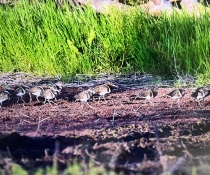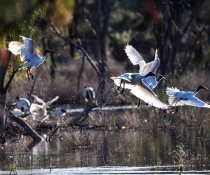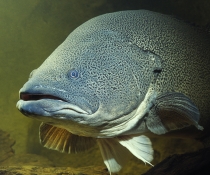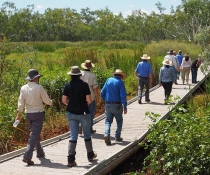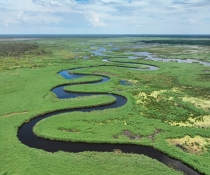Keep an eye out for a Murrumbidgee pelican
Close to 400 pelicans from the Gayini Wetlands in the Lowbidgee floodplain are sporting blue leg bands as part of a study to learn more about their movement and breeding patterns.

It is only the second time pelicans from the Gayini colony have been banded as part of the pelican banding project – a partnership between the Department of Planning and Environment – Environment and Heritage Group, University of NSW, WaterNSW and the Lake Cowal Foundation.
The project's purpose, which began at Lake Brewster in 2017, is to understand where young pelicans go when they fledge and disperse and whether they return to breed in the wetland where they were born.
Gayini Wetlands was added as a study site in 2022 when 49 young pelicans from a large pelican colony were banded with individually numbered blue bands. This year, 394 pelicans were banded at Gayini Wetlands, located in the Lower Murrumbidgee and managed by the Nari Nari Tribal Council.
Murrumbidgee Senior Environmental Water Management Officer James Maguire said where the pelicans go, and importantly, where they choose to breed, can help determine how water for the environment is used to support waterbirds in the Murrumbidgee catchment and other areas in the basin.
"With that information, we can ensure there is the right amount of water in the wetland for the right period of time to support breeding events, ensure sufficient foraging habitat in neighbouring wetlands, and provide protection for adult pelicans and their chicks from land-based predators," Mr Maguire said.
Mr Maguire encouraged the community to get involved in the project.
"We're asking members of the public to keep an eye out for pelicans wearing a distinctive blue leg band and help us understand more about the movements and breeding behaviour of this iconic Australian waterbird," Mr Maguire said.
If you see a pelican with a coloured leg band, please email
peli.bands@environment.nsw.gov.au
Information to include in your email:
- date and time of sighting
- a photograph of the banded bird (if possible)
- the colour and number on the colour band and metal leg band (if you can see it)
- the location of your sighting (a GPS point or nearby locality will help)
- the context – if the bird was alone or with a group
- the bird's behaviour – feeding, flying, etc.
- condition of the bird – healthy, unwell or deceased.
If you find a coloured leg band but no bird, we would also like to hear from you.
In our project, we use orange leg bands for young pelicans at Lake Brewster, black bands for those banded at Narran Lake and blue bands for young pelicans in the Gayini Wetlands.
We can also pass on records to fellow researchers using red leg bands for pelicans in Gippsland Lakes and green leg bands in Westernport Bay, Victoria.


